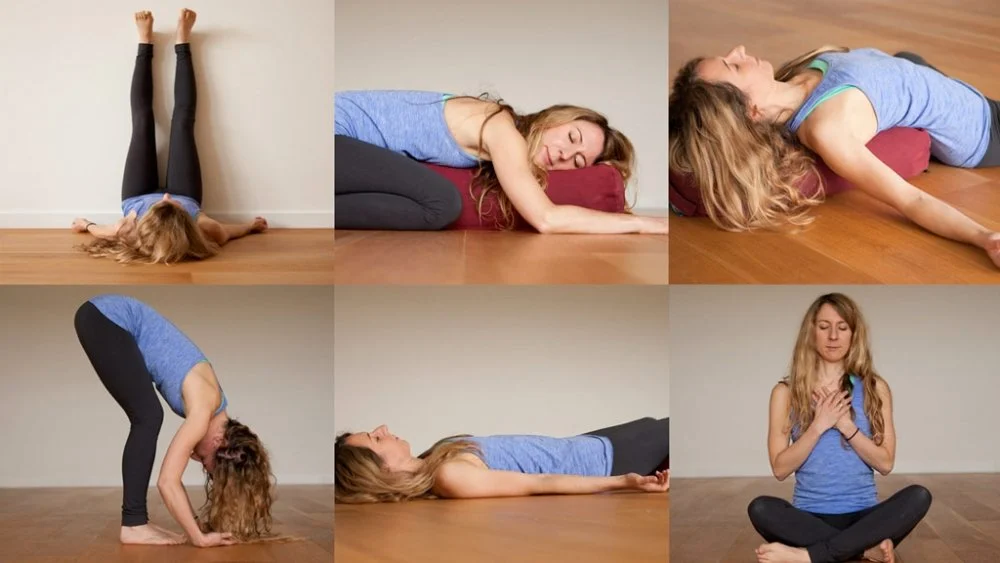Yoga and Ayurveda are both great ways to de-stress and reduce anxiety. Yoga is a practice that originated in India, where it has been used for thousands of years as a way to improve health and well-being.
Ayurvedic medicine is an ancient Indian practice that focuses on using diet and lifestyle changes to prevent disease and promote wellness.
The two practices are often combined into one holistic approach, as they complement each other very well.
So how do these two practices help your mental health? There are many different ways, but here are some examples:
- Yoga helps you manage stress by strengthening your body’s ability to cope with its own responses to stress. It also improves your ability to regulate your emotions and calm yourself down when you feel overwhelmed by negative feelings or thoughts.
- Ayurveda teaches you how to eat in a way that balances your body’s seven bodily systems (called doshas) so you can feel more at ease physically as well as mentally.
Ayurvedic Herbs for Stress Management
The stress of the modern world can be overwhelming. As a result, many people have turned to herbal remedies to manage their stress levels. While some herbal supplements are ineffective at best and harmful at worst, a few herbs have been shown to help with stress management.
- Gotu kola is a herb used in Ayurveda for its anti-stress properties. It has been used as a natural remedy for stress management since ancient times and is considered an adaptogen. It helps in balancing the body’s response to stress. Studies have shown that Gotu kola may help reduce anxiety and stress-related symptoms, including nervousness, irritability, difficulty sleeping, and fatigue.
- Shankhpushpi is another herb that helps in managing stress. It is believed to help balance the body’s response to stress, which can improve mental clarity and focus. The herb has also been shown to improve memory function under stressful situations.
- Brahmi is another herb that helps manage stress through its calming effects on the mind and body. It has been used in traditional medicine for thousands of years as a tonic that promotes physical and mental health. Studies have shown that Brahmi may help reduce anxiety levels when taken regularly over time.
Yoga Asanas for Stress Management
1. Balasana
Balasana, also known as Child’s Pose, is a great way to relax and unwind. It helps to relieve stress, anxiety, and fatigue.
Balasana helps to relieve stress by engaging both sides of your brain at once: the right hemisphere that is responsible for creativity and intuition, as well as the left hemisphere that controls logic and reasoning. By letting go of these dualities, we are able to access our creative side—and that’s where we find some of our most creative ideas!
One of the best ways to relieve stress is to close your eyes and focus on your breath. This helps to calm the mind and ease anxiety. If you’re feeling stressed out or anxious, try taking some deep breaths while lying down in Balasana. You’ll be able to relax more easily as you breathe deeply into your lower belly.
When you’re lying down with your head tilted back, it’s easier for blood flow to reach your brain—which can help relieve headache pain!
If you suffer from chronic back pain, try practising Balasana every day for five minutes. This pose will stretch out your spine and alleviate any tension or stiffness in your lower back muscles.
2. Marjaryasana
The marjyasana, or cat pose, is a great way to relieve stress and tension in your body. It can help you relax and release anxiety, reduce feelings of frustration and anger, and calm your mind.
This yoga pose is done on hands and knees with the knees placed under the hips and elbows under shoulders. The head should be raised slightly so that it’s parallel to the floor. Keep your spine straight as you inhale deeply into your belly, allowing your ribs to expand out from your spine. Then exhale fully through pursed lips as you allow your stomach to sink toward the floor. Let this movement continue for several breaths until you feel completely relaxed.
3. Shavasana
Shavasana is a pose that’s often used in yoga classes to help students relax. The pose itself is pretty simple: you lie on your back and stretch out your arms and legs. But the benefits of this pose are far-reaching, and include reducing stress levels, alleviating pain, improving concentration and memory, and even boosting your immune system.
You might be wondering how something as simple as lying down can have such a profound effect on your body. Well, it turns out that when you’re laying down in shavasana, you’re actually giving yourself a chance to rest—which is something we all need more of these days!
When you’re stressed out, there are certain parts of your body that really suffer: namely, your heart and lungs. Your breathing becomes shallow, which makes it harder for oxygen to get into your blood stream. This can lead to fatigue or even dizziness at worst—and definitely won’t help with your stress levels!
When you’re in shavasana, the air you breathe fills your lungs with the oxygen that keeps your body moving. As the blood in your capillaries expands, your heart rate lowers and you may feel a gentle release of tension in your muscles.
4. Bhujangasana
The Cobra Pose is known for its ability to stretch and strengthen the upper back, shoulders, and abdominal muscles. It also helps to improve posture by strengthening the core.
By practicing regularly, you’ll notice that your body feels more relaxed physically and mentally.
One of the reasons this pose is so beneficial for relieving stress is that it improves posture. When you’re feeling stressed or anxious, your shoulders tend to hunch up towards your ears in a protective movement known as “turtle mode.” This makes it hard for your lungs to expand properly which means less oxygen circulating throughout your body. This lack of oxygen can cause feelings of lethargy and fatigue which are common symptoms when experiencing stress or anxiety.
The Cobra Pose helps reverse this hunching by stretching out the chest area while strengthening muscles around the rib cage which allows them to move more freely with each breath taken in through your nose and out through your mouth. By doing this regularly over time, you’ll notice how much easier it becomes to breathe normally even when under pressure due to external factors like deadlines at work or family drama at home!
5. Halasana
Halasana, or the Plow Pose, is a great way to relieve stress. It helps you relax by relieving tension in your back and neck. It also improves blood circulation throughout your body. When you do Halasana regularly, you will notice that it helps you sleep better at night.
If you are someone who suffers from headaches, Halasana can help because it releases tension from your neck and shoulders. You can also use Halasana as a quick workout before going to work or school because it helps build strength in your arms and shoulders while stretching out your legs and back muscles.





